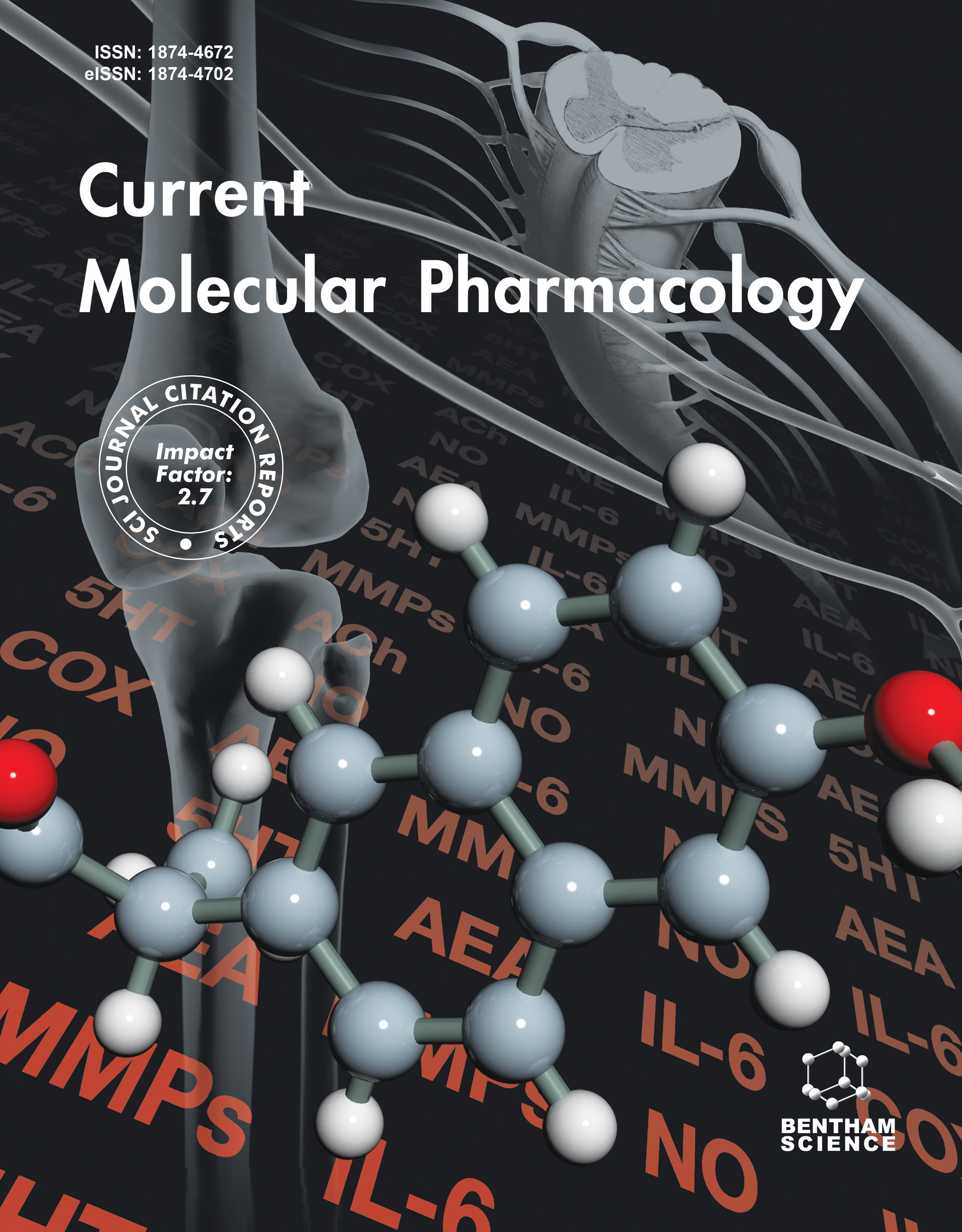-
oa Editorial [Hot Topic: Evolving Drug Targets in DNA Base Excision Repair for Cancer Therapy (Guest Editor: Srinivasan Madhusudan)]
- Source: Current Molecular Pharmacology, Volume 5, Issue 1, Jan 2012, p. 1 - 2
-
- 01 Jan 2012
- Previous Article
- Table of Contents
- Next Article
Abstract
The overall prognosis for advanced cancer remains poor. Although chemotherapy, radiotherapy and targeted agents have significantly improved patient outcomes, treatment related toxicity and the emergence of resistance negatively impact on survival. The therapeutic efficacy of many chemotherapeutic agents and ionising radiation is determined by their ability to induce DNA damage in cells. However, the DNA repair capacity of cancer cells to repair DNA damage induced by cytotoxic agents may directly influence treatment efficacy and resistance. Therefore, pharmacological inhibition of DNA repair in cancer cells has the potential to influence tumour response and clinical benefit to patients [1, 2]. The potential of DNA repair inhibitors has been confirmed in preclinical and clinical studies using Poly(ADP-ribose) polymerase (PARP) inhibitors [3-8]. PARPs are involved in the regulation of several cellular pathways including DNA base excision repair (BER) [9]. Tumours that are deficient in homologous recombination (HR) DNA repair pathway (tumours in patients with germline mutations in the BRCA1 or BRCA2 genes) are dependent upon other DNA repair pathways such as BER for survival. However therapeutic inhibition of BER using PARP inhibitors leads to the selective killing of BRCA1 or BRCA-2 tumour cell in the absence of any cytotoxic agent. The ability of PARP inhibitors to induce synthetic lethality in BRCA deficient breast and ovarian cancer suggests that other factors within BER are also potential synthetic lethality targets. Moreover, the ability of BER modulation to enhance cytotoxicity of alkylating agents and ionising radiation provides further evidence that BER factors are also likely to be promising targets to enhance therapeutic efficacy of anti-cancer agents. This exciting hot topic issue in Current Molecular Pharmaoclogy has brought together leading experts in the field to review the current status of BER in cancer therapy. As several reviews have been published recently on PARP inhibitors [5-8] we have decided to focus on BER targets other than PARP in this issue. Yun-Jeong Kim and David M.Wilson III have set the scene with an overview of BER biochemistry. BER pathway is complex and is usually initiated by a damage specific DNA glycosylase, which removes the damaged base creating an abasic site (apurinic/apyrimidinic, AP site). AP endonuclease (APE1) then cleaves the phosphodiester bond 5' to the AP site thereby generating a nick with 5'-sugar phosphate (dRP) and 3'-hydroxyl group. Members of the poly (ADP-ribose) polymerase (PARP) family of proteins get activated by single strand DNA breaks induced by APE1 and catalyse the addition of poly (ADP-ribose) polymers to target proteins, affecting protein-protein interactions. DNA polymerase β adds the first nucleotide to the 3'-end of the incised AP site. Normally, the reaction continues through the short-patch repair pathway where Pol β removes the 5'-sugar phosphate residue (by the process of β-elimination) and DNA ligase III-XRCC1 heterodimer (or DNA ligase I) then completes the repair [10-17]. AP sites are obligatory intermediates in the pathway for repair of alkylated bases (caused by alkylating agents such as temozolomide) and oxidised DNA bases (caused by ionising radiation) [18]. Unrepaired AP sites are cytotoxic and affect genomic integrity. In BER, AP sites are processed by AP endonucleases (APE1). APE1 is a multifunctional protein. The DNA repair function is performed by the C-terminal domain whereas the N-terminal domain is involved in redox regulation of transcription factors. Emerging preclinical and clinical data confirm that both C-terminal and N-terminal domains of APE1 are promising new drug targets. Odde et al. have reviewed the current status of APE1 DNA repair domain inhibitors in preclinical development. Kelley and co-workers have summarised the translational application of APE1 redox domain inhibitors in cancer. DNA polymerase β is also a promising drug target in BER. The biological relevance of Pol β and translesional synthesis is discussed by Nocolay et al. Strategies to impair Pol β function in cancer therapy have been β reviewed in detail by Goellner et al. It is increasingly clear that control of redox homeostasis impacts upon oxidative base damage. Storr and co-workers discuss the interesting links between DNA repair and redox regulation and applications to cancer therapy. Temozolomide is an important alkylating agent used in cancer therapy. The mechanisms of action of temozolomide, resistance mechanisms and strategies to bypass such resistance that impair therapeutic efficacy are discussed by Zhang et al. The narrow therapeutic index and the heterogeneity of patient responses to chemotherapy and radiotherapy imply that the efficacy of these agents could potentially be tailored based on tumour biology using predictive biomarkers. Gossage et al. provide the clinical evidence to support the view that BER factors are promising prognostic and predictive markers in cancer and could influence personalised cancer therapy in the future. In conclusion, this hot topic issue is the first comprehensive summary of emerging drug targets in BER and will provide essential information for basic scientists, pharmaceutical scientists and clinicians interested in cancer therapy. DNA repair is the next new frontier in anti-cancer discovery. A concerted collaborative effort by the pharmaceutical industry and academic research groups will help accelerate drug development targeting DNA repair in the near future.


